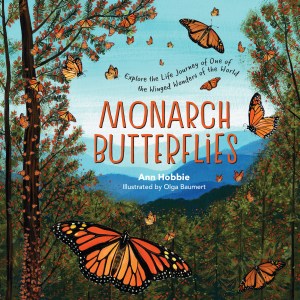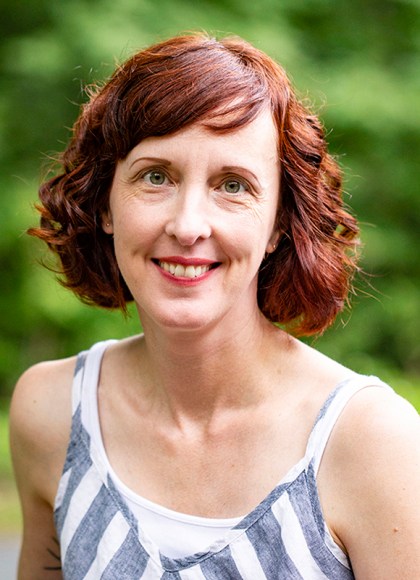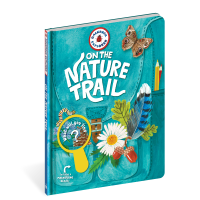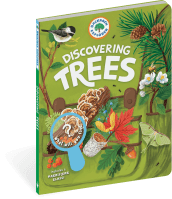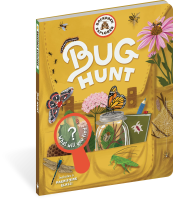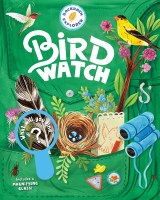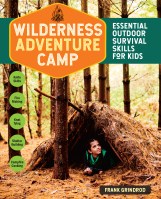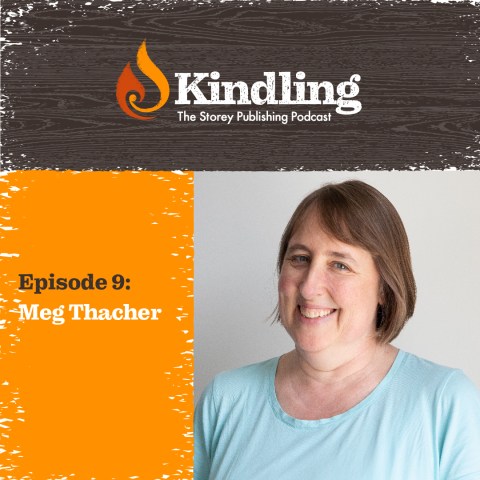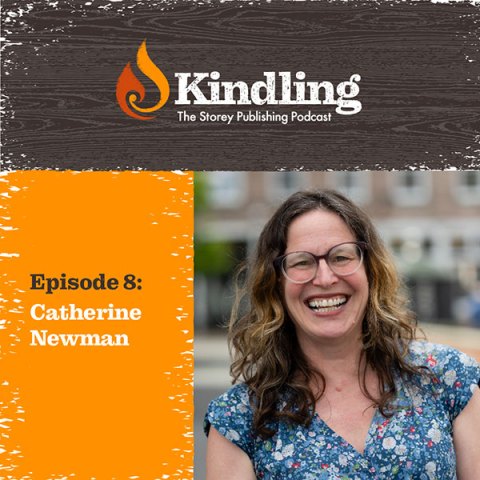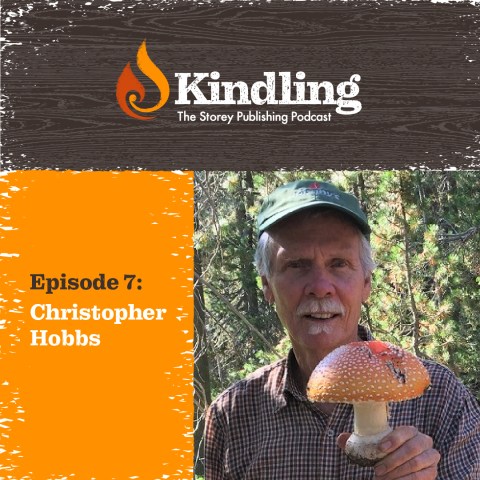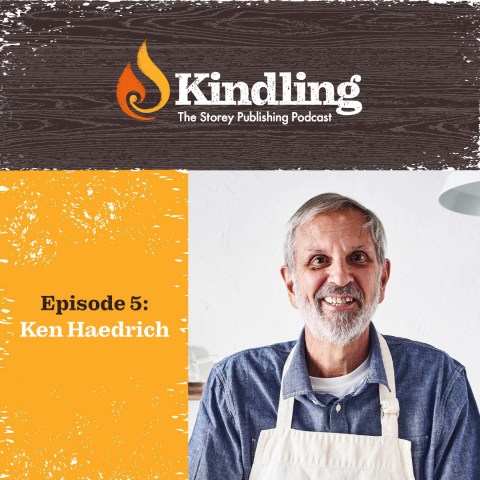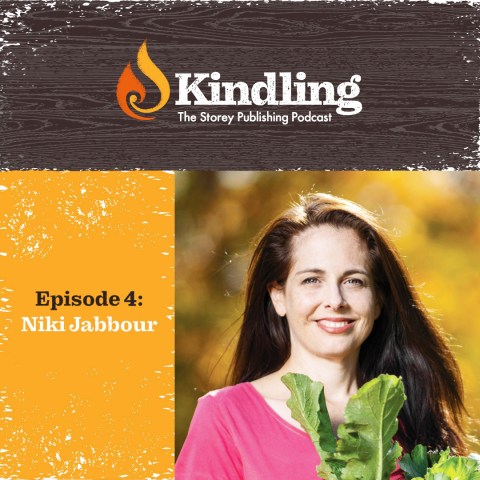Kindling Podcast Episode 11: Ann Hobbie and Olga Baumert
Tune in as Storey creative director Alethea Morrison speaks with author Ann Hobbie and illustrator Olga Baumert about their collaboration on Monarch Butterflies.
In this episode, Hobbie and Baumert share their experience working with a remarkable team of women to bring Monarch Butterflies to life, from the initial outline to finished illustrations and everything in between. Plus, they talk about conservation efforts and the fact that when kids learn to care for an individual creature, like the Monarch butterfly, they start to notice other insects and other things growing in the garden, and start to care about them, too.
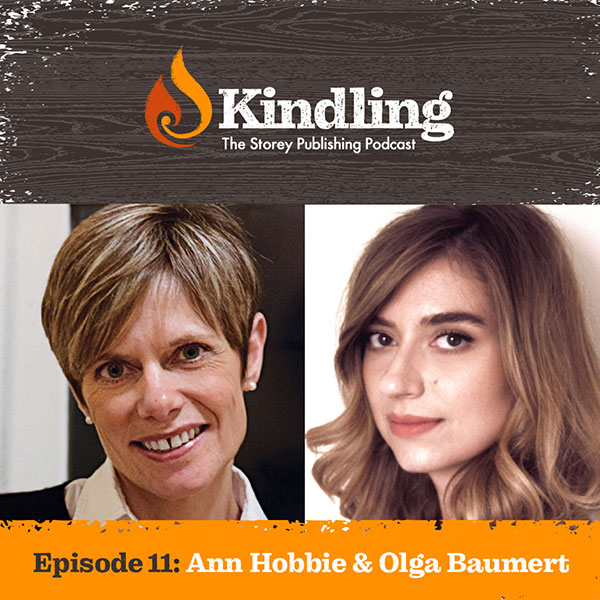
This episode of Kindling: The Storey Publishing Podcast can also be found on podcast platforms, including Spotify and iTunes. If you enjoyed this episode, please be sure to leave us a rating and review.
Full Podcast Transcript
Deborah Balmuth:
This is Kindling, the Storey Publishing podcast, where we explore the spark that ignites a deep-rooted passion for sustainable living. I’m Deborah Balmuth, Storey’s publisher. From growing organic food and making herbal remedies to fermenting, weaving, and raising chickens, the authors we’ll meet will empower you with the skills and savvy they’ve gleaned from years of hands-on experience. In each episode of Kindling, you’ll learn what fuels these authors’ excitement and what they love most about creating books that share their expertise and enthusiasm with the world.
Among the most iconic and important butterflies in North America is the Monarch. But sadly, this species and its habitat are in decline. Ann Hobbie is a leader at Monarch Joint Venture, a national program dedicated to conserving Monarch butterflies. She partnered with illustrator Olga Baumert to create the children’s book Monarch Butterflies, which not only tells the fascinating story of monarchs but offers kids all sorts of ways they can help protect these amazing pollinators. Storey creative director Alethea Morrison recently spoke with both Anne and Olga, and as Ann explained, the book’s genesis was a rather interesting one.
Ann Hobbie:
I had an amalgam of important confluences. I was a teacher who had used monarchs with my students, and I had seen the spark, and I was also very much involved with researchers at the University of Minnesota, Karen Oberhauser’s lab, in helping to teach teachers to use monarchs as inquiry-based teaching tools. Then, in addition to those two things, so the research side of things and the teacher training side of things, and then, of course, the love with children around monarchs, I love to write. So, I think I was meant to write this book. I sat down to write you a sample spread, and the book just tumbled out.
Alethea Morrison:
Yeah, I remember you were so… you were excited, but you were really reluctant. You were like, oh, I have too much going on, but it’s like I’ve always wanted to do this. I really need to do this.
Ann Hobbie:
We needed this book. There are a lot of books out there, as you know, about Monarch butterflies, but I really wanted to write the whole story—the biology story, the ecology story, and the conservation story—and I wanted to do it accurately.
Alethea Morrison:
You really worked hard. You went to a lot of additional experts.
Ann Hobbie:
I did, yes.
Alethea Morrison:
Right, to get their feedback, and that was a lot of the work we did throughout, was trying to get that right. I remember you had spoken at a board meeting or something, and you made a promise to them.
Ann Hobbie:
I made a promise, and I got a round of applause. It was a meeting of all the Monarch Joint Ventures partners across the US. It’s a variety of government agencies and nonprofits and educators, college-level researchers, and even businesses. I said that this book would be accurate. This will be an accurate telling, and they all applauded, so that was really fun.
Alethea Morrison:
Once I had you on board, I needed to find an artist to bring the topic alive to readers through the pictures. I wanted jaw-droppingly beautiful illustrations to lure readers into the pages and hold them there, and I approached Olga, Olga Baumert.
Olga, how would you describe your artwork and what you hope to achieve with it?
Olga Baumert:
Well, in terms of technique, I think my work is quite traditional because I use the mix of different traditional mediums. I use gouache paint. I use watercolors, colored pencils, wax crayons, pastels. I really like experimenting with art supplies, so the list just grows. Then, I really want my art to capture some kind of emotion, like childhood memories or some kind of experience that I had. It’s just the most rewarding thing when other people look at the image and sort of see what I intended them to see without me telling them what it is. I really love nature, and I find it really inspiring. I love botany, botanical illustrations that are so accurate and just amazingly beautiful. I actually collect old books about plants and insects, so when I heard about the book, I just immediately loved the idea to be able to do something meaningful and then also to be able to do all those botanical illustrations.
Alethea Morrison:
That’s so cool. I didn’t know that you had a collection of books on botany and insects.
Olga Baumert:
Yeah. Every time I go to an old bookstore or charity shop, I look out for these because the illustrations in this kind of old additions are just amazing, and you can get them for quite cheap because normally the new editions of botanical illustrations, they’re quite pricey, but you can get really, really nice vintage ones.
Alethea Morrison:
Nice. Do you ever, do you just use them for inspiration, or do you ever use them as reference in your art?
Olga Baumert:
Not really that much as reference, but I actually like to go out with the book and kind of see what plants I can find, or pick something, do some pressing, and then draw from the plants I picked.
Alethea Morrison:
I want to share something that I saw on your website that you wrote about yourself that I think is just really charming. You said that, “when I start a drawing or painting, I am usually trying to capture emotions I feel at that moment or ones that follow me for a longer period of time. It is mostly because every piece of art, illustration, or design that draws my attention contains some thought, captures a moment, or makes me think I could go inside that painting and never come back.” I love that part. “I would like my work to do that to people.”
Olga Baumert:
Yes, yes. I definitely would. I mean, sometimes it’s just the little things. Sometimes I see a painting, and it’s not complicated, but it just has this kind of emotion in it, and that makes you just reminiscent about something, makes you think about something. I think that’s just the greatest thing.
Alethea Morrison:
In researching what we call in publishing comp titles, I found that there are other educational books on the market about monarchs that are photographic and feel hardworking like a textbook. Others are illustrated but are light on the science and often inaccurate. Few of them take much interest in conservation. And you spoke a bit about how important it was for the book to be accurate. Did you have any other hopes and dreams about what your book would be? What else was at the top of the pyramid in terms of goals and priorities?
Ann Hobbie:
Layered and then compelling. That’s where Olga comes in so beautifully because what you describe, Olga, as creating something that people can relate to either in their previous experience or want to relate to in so far as they could climb into it, I think we achieved here. It’s an inviting book, and everybody who sees it and touches it just wants more.
Alethea Morrison:
Do you want to give our listeners a little… maybe not everybody knows the threats that monarchs face. Do you want to tell us a little bit about that?
Ann Hobbie:
When I was a little girl, monarchs were really abundant across the US, and they were abundant on the west coast as well, but in the last 25 to 30 years, we’ve seen a really significant decline, more than 80% down from 15 or 20 years ago for the monarchs that are east of the Rocky Mountains and more than 99.9% down for the monarchs that are on the west coast. There are a variety of pressures that are affecting those numbers, but they include climate change—and particularly in the west because it affects the availability and timing of milkweed plants and nectar plants and also yields things like drought and extreme weather events, storms, and forest fires. Also, the increased use of pesticides on our agricultural crops.
It used to be that milkweed was abundant in farm fields, particularly corn and soybean fields. It would grow in between the rows and farmers were always fighting it, but it turned out to be, research revealed, a pretty significant source of food for monarch caterpillars, and then Roundup Ready crops came along, and there isn’t any more milkweed in those fields. It’s incumbent upon us, if we want to save this species, that we have to find other places to grow both milkweed and nectar plants that they need. There is other land available, things like lawns and rights of way and roadside ditches, so efforts are being made to really expand this habitat.
I will say that the US Fish and Wildlife Service reviewed consideration for monarchs as an endangered species, and it took a couple of years for that evaluation to be complete. The conclusion was that, yes, they are endangered, but they’re precluded because there are too many other species ahead of them in line, so they won’t get the attention from policy points of view that come with being listed as an endangered species until we possibly take care of some of the other species that are ahead of them in line.
Alethea Morrison:
That brings up another point that we might just touch on that when you do something for monarchs, you often do something for many species. Do you want to tell us a little bit about that?
Ann Hobbie:
Exactly. Monarchs are such a great flagship species. We in the monarch world like to call them kind of a gateway insect. They are so beautiful and so easy to rear (where it’s legal to do so), and I’m not a big proponent of rearing to try to save the monarch. That’s not an efficient way to do it, and it’s… there are other problems that can come with that, but they really illustrate for children the magic of metamorphosis and the wonder of it. That’s what I mean by magic of it, just that it’s an amazing thing to watch. When you start to care about monarchs and you see how interesting they are, then you start to notice other insects and other things growing in the garden, and you start to care about them too. I like the way the book helps the reader understand that when you care for an individual creature, you’re caring for its whole ecosystem.
Alethea Morrison:
I’d love to give our listeners a peek into the process of how a children’s book, or at least this one, was made. First, we developed an outline with a fairly clear vision of what topics we would cover on each page. I’d already written a rough outline as part of my proposal process, but Ann, you completely scrapped it and made it better, a thousand times over. Then, once we had agreed on the outline and collaboration with our project editor, Hannah Fries, you started writing. Tell us about your writing process and your partnership with Hannah.
Ann Hobbie:
I had never worked with an editor before, so I was a little bit nervous about just… I didn’t know how that was going to go. I will say that it just became teamwork, and I felt like we were a well-oiled machine. I knew what I wanted to convey. I had a tendency to be wordy. She was really good at whittling it down to its essence, pulling me back a little. Then, I think I got better at that as we went.
I knew I wanted these additional pieces, and she had a great sense of which things belonged on the page and which things belonged at the back of the book. It just was a really… it was a joy to work with her. She’s just so skilled. Like, Olga, I didn’t just… Olga shared this with me privately that she doesn’t just, she’ll talk more, but she doesn’t just do the book sequentially, and we didn’t necessarily… I didn’t necessarily write it that way either. I would sort of jump among spreads.
I was always carrying around the outline in my head, so I would think of things that I wanted to include in a particular spread, and I would jot them down or go work on that spread for a while, and then continue to work on whatever Hannah and I were working on.
The bulk of this book, I will say, was written on a vacation in a little cabin at the edge of the Boundary Waters Canoe Area one July. My family, we were up there for a week, and I just told them I have to write. There’s a lot of work to be done, and now is the time. I would get up early at the crack of dawn and sit in my big soft chair and write and write and write. At about noon, I would change out of my pajamas and join the rest of them for the day, so that is… I have a great memory of working on this book in a specific spot next to a gorgeous lake.
Alethea Morrison:
That’s fun. Olga, why don’t you share your process of what you would do once you got the text layouts.
Olga Baumert:
Well, after I read the text, I just to do some research on what I’m going to be drawing and how much space I’ve got. Once I look at that and all the space and everything, I just pretty much started drawing straight away.
Alethea Morrison:
It’s an honor, right, to be able to bring something like this into the world, a book like this that has meaning and purpose, and longevity. I know we all feel proud of what we made together. What was the best part for you, Olga?
Olga Baumert:
I think it’s amazing to be able to work on the book that could help the environment and help preserve those wonderful animals, and the whole kind of mystery of it is so interesting to me, the whole journey and the fact that it takes a few generations of monarchs to make the journey. You know, the book teaches children, tells people how they can help, and it’s such a small thing. It’s so easy. It’s just as easy as planting the right flowers in your garden, and it can make such a huge change.
The whole process of making that book was, I think, really smooth. It felt like it just flew right out. Then, I know every detail, but then I get it in the mail, and it’s all put together, and it has all your wonderful input in the backgrounds and all the information, and it’s just… it blew my mind. It was wonderful.
Alethea Morrison:
How about you, Ann? What was the best part for you?
Ann Hobbie:
The best part was the creation of it together with this remarkable team of women, and now it’s birth, and I get to see people respond to it in the world, and that is so exciting. I mean, it has a life of its own, and it will because of its timelessness, I think. Seeing friends’ children respond to it, seeing friends respond to it, seeing strangers respond to it, it’s out in the world to be experienced and I think that’s really quite wonderful that the book itself has a life of its own.
Deborah Balmuth:
That was Ann Hobbie and Olga Baumert, author and illustrator of Monarch Butterflies, speaking with Storey creative director, Alethea Morrison.
To learn more about Storey Publishing’s books and authors, visit storey.com. That’s S-T-O-R-E-Y dot com, and if you have questions or comments about what you hear on Kindling, let us know. You can email us at feedback@storey.com. That’s it for this edition of Kindling, coming to you from the Berkshire Hills of western Massachusetts. I’m Storey’s publisher, Debra Balmuth. Thanks for listening.
Next time on Kindling…
Phyllis Good:
I have never felt captive to recipes. I’ve learned as I’ve gone through many years of cooking to adapt, to substitute, so I’d sort of figure out my own adaptation of that.
Deborah Balmuth:
Phyllis Good talks about winging it in the kitchen and her book, No Recipe? No Problem!.
KINDLING IS PRODUCED BY SHEIR AND SHIM, LLC.
